Your cart is currently empty!
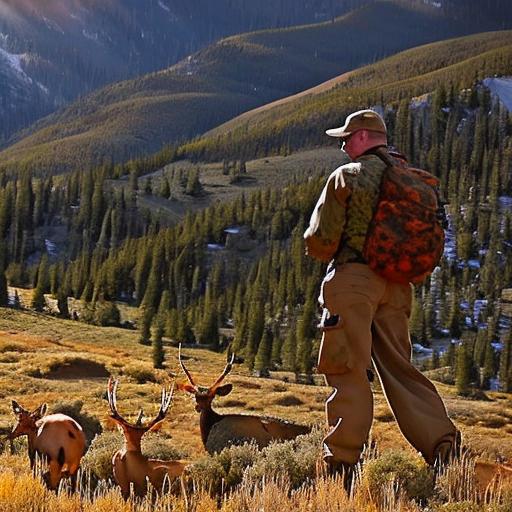
Exploring the Thrill of Colorado Elk Hunting: A Look at the Latest Statistics and Trends

Elk hunting in Colorado has long been a cherished tradition and a significant part of the state’s culture. With its vast wilderness areas and abundant elk populations, Colorado offers some of the best hunting opportunities in the country. Elk hunting not only provides a thrilling outdoor experience but also plays a crucial role in wildlife management and conservation efforts. In this article, we will explore the growing popularity of elk hunting in Colorado, the latest hunting statistics, the best hunting seasons, the importance of proper gear and equipment, the role of conservation, different hunting methods, top hunting destinations, guided hunting trips, the impact of climate change, and tips for a successful elk hunting trip.
Key Takeaways
- Elk hunting is becoming increasingly popular in Colorado.
- The latest statistics show that elk populations are stable and hunting success rates are high.
- The best hunting seasons for elk in Colorado are typically in the fall.
- Proper gear and equipment are essential for a successful elk hunting trip.
- Conservation efforts play a crucial role in maintaining healthy elk populations in Colorado.
The Growing Popularity of Elk Hunting in Colorado
Elk hunting in Colorado has seen a significant increase in popularity over the years. There are several reasons for this surge in interest. Firstly, Colorado is home to one of the largest elk populations in North America, making it an ideal destination for hunters looking for a challenging and rewarding experience. Additionally, the state’s diverse landscapes and vast public lands provide ample opportunities for hunters to explore different terrains and habitats.
The economic impact of elk hunting in Colorado cannot be overstated. The influx of hunters from both within and outside the state brings substantial revenue to local communities. From purchasing licenses and permits to booking accommodations and buying supplies, hunters contribute significantly to the local economy. Moreover, elk hunting supports jobs in various sectors such as hospitality, retail, and guiding services.
Understanding the Latest Elk Hunting Statistics in Colorado
To get a better understanding of elk hunting in Colorado, it is essential to look at the latest hunting statistics. Each year, the Colorado Parks and Wildlife (CPW) issues a limited number of elk licenses through a draw system. In recent years, there has been an increase in the number of licenses issued due to successful conservation efforts and population management strategies.
Success rates for elk hunters vary depending on several factors, including hunting experience, skill level, and the chosen hunting method. On average, success rates range from 15% to 30%, with some hunters achieving higher success rates. It is worth noting that success rates can fluctuate from year to year due to various factors such as weather conditions, elk behavior, and hunter pressure.
The Best Hunting Seasons for Elk in Colorado
| Year | Season Dates | Number of Licenses | Success Rate |
|---|---|---|---|
| 2020 | Oct 10 – Oct 14 | 22,920 | 22% |
| 2019 | Oct 12 – Oct 16 | 22,920 | 23% |
| 2018 | Oct 13 – Oct 17 | 22,920 | 20% |
| 2017 | Oct 14 – Oct 18 | 22,920 | 19% |
| 2016 | Oct 15 – Oct 19 | 22,920 | 22% |
Colorado offers several hunting seasons for elk, each with its own advantages and considerations. The archery season typically begins in late August and extends into September, providing hunters with the opportunity to hunt during the elk rut. This season requires stealth and patience as hunters must get within close range of their target.
The muzzleloader season follows the archery season and usually takes place in mid-September. This season allows hunters to use muzzleloading firearms, which require a slower reloading process but offer increased accuracy and range compared to archery equipment.
The rifle seasons are the most popular among elk hunters in Colorado. There are four rifle seasons, each lasting five days and occurring in October and November. These seasons provide hunters with the advantage of longer range shooting and increased chances of success due to the higher number of elk on the move.
When choosing a hunting season, it is crucial to consider factors such as weather conditions, elk behavior patterns, and personal preferences. It is also essential to familiarize oneself with the specific regulations and restrictions for each season.
The Importance of Proper Gear and Equipment for Elk Hunting
Having the right gear and equipment is crucial for a successful elk hunting trip in Colorado. Some essential gear includes a reliable rifle or bow, appropriate ammunition or arrows, binoculars or a spotting scope for scouting, a backpack for carrying supplies, a GPS device or map for navigation, and appropriate clothing and footwear for varying weather conditions.
When choosing gear, it is important to consider factors such as durability, comfort, and functionality. Investing in high-quality equipment can make a significant difference in the field and ensure a more enjoyable hunting experience. It is also essential to pack essential safety gear such as a first aid kit, a headlamp, and a means of communication in case of emergencies.
The Role of Conservation in Elk Hunting in Colorado
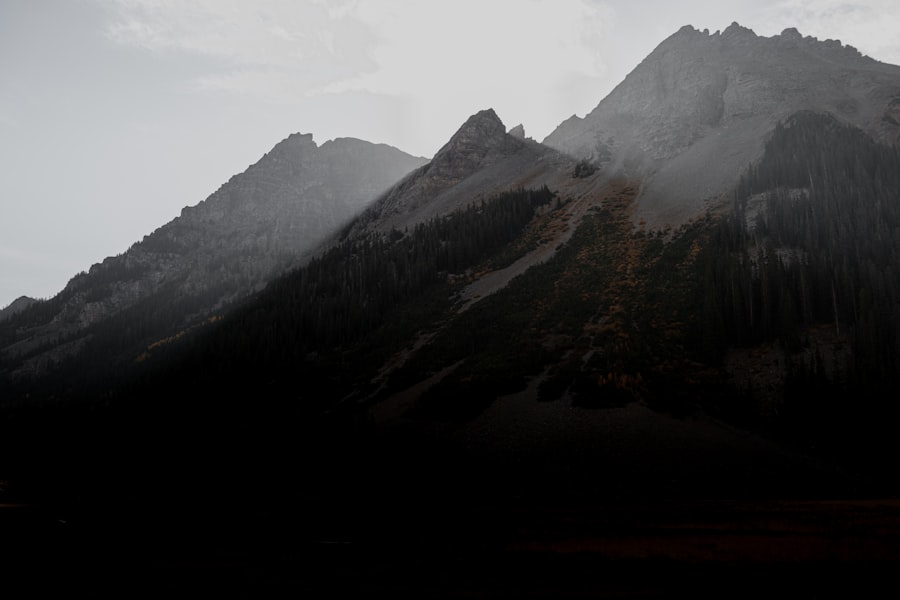
Conservation plays a vital role in elk hunting in Colorado. The state has implemented various conservation efforts to ensure the long-term sustainability of elk populations and their habitats. These efforts include habitat restoration, population management, and research initiatives.
Conservation is crucial for maintaining healthy elk populations and preserving the natural balance of ecosystems. By managing elk populations, wildlife agencies can prevent overgrazing, reduce conflicts with humans, and maintain the overall health of the herd. Conservation efforts also contribute to the preservation of other wildlife species that share the same habitats as elk.
Hunters can contribute to conservation efforts by practicing ethical hunting practices, following regulations and restrictions, and supporting organizations dedicated to wildlife conservation. Additionally, hunters can participate in volunteer programs and contribute financially to conservation initiatives.
Exploring the Different Elk Hunting Methods in Colorado
Elk hunting in Colorado offers hunters a variety of methods to choose from. Each method has its own advantages and considerations, and hunters should select the one that aligns with their skills, preferences, and physical abilities.
Spot-and-stalk is a popular method where hunters use binoculars or spotting scopes to locate elk from a distance and then move closer for a shot opportunity. This method requires patience, stealth, and good knowledge of elk behavior.
Calling is another effective method used during the rut when bulls are vocal and responsive to calls. Hunters use bugles or cow calls to mimic elk sounds and attract bulls within shooting range. This method requires practice and knowledge of different calls and their appropriate usage.
Still hunting involves moving slowly and quietly through elk habitat while constantly scanning for signs of elk. This method is effective in dense cover or when elk are bedded down and less active. Still hunting requires patience and careful observation.
The Top Elk Hunting Destinations in Colorado
Colorado offers a wide range of hunting destinations, each with its own unique characteristics and hunting opportunities. Some of the top elk hunting areas in the state include the San Juan Mountains, the Flat Tops Wilderness Area, the White River National Forest, and the Gunnison National Forest.
When choosing a hunting destination, it is important to consider factors such as accessibility, elk population density, public land availability, and hunting pressure. It is also advisable to research specific units and consult with local wildlife agencies or experienced hunters for up-to-date information on elk populations and hunting conditions.
The Benefits of Guided Elk Hunting Trips in Colorado
For hunters looking for a more guided and structured experience, hiring a professional guide can be beneficial. Guided elk hunting trips provide hunters with expert knowledge of the area, access to private lands, assistance with scouting and tracking, and increased chances of success.
Guides can also provide valuable insights into elk behavior, habitat preferences, and hunting techniques. They can help hunters navigate unfamiliar terrain, ensure compliance with regulations, and enhance safety during the hunt. Additionally, guided trips often include accommodations, meals, and transportation, making the overall experience more convenient and enjoyable.
When choosing a guide, it is important to consider their experience, reputation, and knowledge of the specific hunting area. It is also advisable to communicate expectations and preferences beforehand to ensure a successful and satisfying hunting trip.
The Impact of Climate Change on Elk Hunting in Colorado
Climate change has significant implications for elk populations and their habitats in Colorado. Rising temperatures, changing precipitation patterns, and altered vegetation dynamics can affect elk behavior, migration patterns, and overall population dynamics.
As temperatures increase, elk may seek higher elevations to find cooler habitats during summer months, making them more challenging to locate and hunt. Changes in vegetation can also impact elk nutrition and forage availability, potentially affecting their body condition and reproductive success.
Hunters can adapt to changing conditions by staying informed about climate trends and adjusting their hunting strategies accordingly. This may involve scouting new areas, hunting at different elevations, or modifying hunting techniques to account for changing elk behavior.
Addressing climate change requires collective efforts from individuals, communities, and governments. Supporting initiatives that promote renewable energy, reduce greenhouse gas emissions, and protect natural habitats can help mitigate the impacts of climate change on elk populations and their ecosystems.
Tips for a Successful Elk Hunting Trip in Colorado
To ensure a successful elk hunting trip in Colorado, preparation and planning are key. Here are some tips to consider:
1. Research the area: Familiarize yourself with the hunting regulations, unit boundaries, and specific hunting seasons for your chosen area. Study maps and satellite imagery to identify potential elk habitats and access points.
2. Scout the area: Visit your hunting area before the season to scout for signs of elk activity, such as tracks, droppings, rubs, and wallows. This will help you identify potential hunting spots and plan your strategy.
3. Stay physically fit: Elk hunting can be physically demanding, requiring long hikes and traversing rugged terrain. Engage in regular exercise and conditioning to ensure you are prepared for the physical challenges of the hunt.
4. Practice shooting: Regularly practice shooting with your chosen weapon to improve accuracy and confidence. Familiarize yourself with different shooting positions and distances to be prepared for various scenarios in the field.
5. Pack essential supplies: Make a checklist of essential supplies such as food, water, clothing layers, navigation tools, first aid kit, survival gear, and communication devices. Pack extra supplies in case of emergencies or unexpected situations.
6. Stay patient and persistent: Elk hunting can be challenging, and success may not come easily. Stay patient, persistent, and adaptable in your hunting strategies. Be prepared to adjust your plans based on changing conditions and elk behavior.
7. Prioritize safety: Safety should always be a top priority during the hunt. Familiarize yourself with firearm safety rules, practice proper wilderness survival techniques, and inform someone of your hunting plans and expected return time.
Elk hunting in Colorado offers hunters a unique and thrilling outdoor experience. With its abundant elk populations, diverse landscapes, and conservation efforts, Colorado remains a top destination for elk hunters. By understanding the latest hunting statistics, choosing the right hunting season, investing in proper gear and equipment, supporting conservation efforts, exploring different hunting methods, selecting the right destination, considering guided trips, addressing climate change, and following key tips for a successful trip, hunters can maximize their chances of a rewarding and memorable elk hunting experience in Colorado.
If you’re interested in Colorado elk hunting statistics, you might also want to check out this related article on the best time of year to hunt rabbits. It provides valuable insights and tips for rabbit hunting enthusiasts.
FAQs
What is the success rate for elk hunting in Colorado?
According to the Colorado Parks and Wildlife, the overall success rate for elk hunting in Colorado is around 20-25%.
What is the average size of an elk harvested in Colorado?
The average size of an elk harvested in Colorado is around 6×6 or 7×7, with antler sizes ranging from 300-400 inches.
How many elk are harvested in Colorado each year?
On average, around 40,000 elk are harvested in Colorado each year.
What is the cost of an elk hunting license in Colorado?
The cost of an elk hunting license in Colorado varies depending on residency status and type of license, but ranges from $49-$661.
What is the peak season for elk hunting in Colorado?
The peak season for elk hunting in Colorado is typically in September and October during the rutting season.
What is the minimum caliber rifle required for elk hunting in Colorado?
The minimum caliber rifle required for elk hunting in Colorado is .24 caliber.
What is the bag limit for elk hunting in Colorado?
The bag limit for elk hunting in Colorado varies depending on the type of license and hunting unit, but ranges from 1-5 elk per season.

Herb has been a longtime lover of the outdoors. Whether it be hunting, camping, fishing or just getting outside to reset. Proud father and animal lover. Bourbon anyone?

by
Tags:
Comments

Categories
- Big Game Hunting (301)
- Deer (202)
- Reviews (3)
- Shooting (16)
- Slingshot (1)
- Small Game Hunting (42)
- Upland Hunting (126)
- Waterfowl Hunting (3)

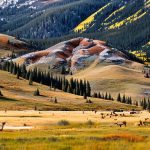
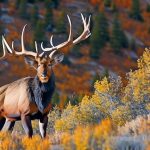

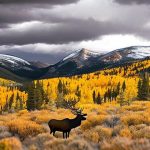
Leave a Reply